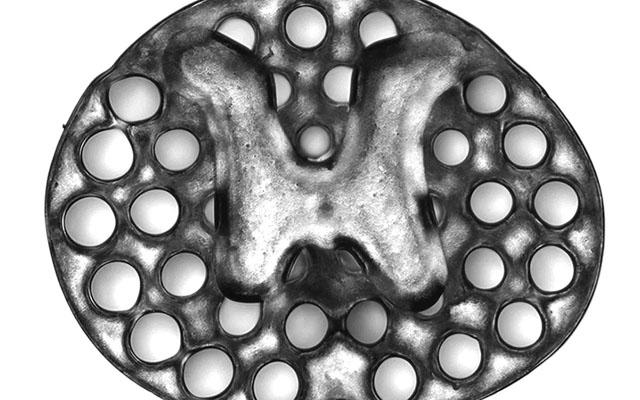3D-printed implants partially restore leg function

Researchers funded in part by the National Institutes of Health have partially restored limb function to spinal-cord-injured rats. They used a rapid 3D printing technology to create scaffolds that precisely fit the injury site. Each of these implants contain small conduits through which regenerating nerve fibers can reconnect. The researchers have also generated prototypes of these implants for humans.
The study, led by Shaochen Chen, Ph.D., of the University of California, San Diego, appears in Nature Medicine. NIH funding was provided by the Eunice Kennedy Shriver National Institute of Child Health and Human Development and the National Institute of Biomedical Imaging and Bioengineering.
Background
Spinal cord injury usually begins with a sudden blow to the spine that fractures or dislocates vertebrae. Damage from these displaced bone fragments and other tissues of the spine may bruise or tear into spinal cord tissue. Almost complete recovery is possible from some spinal injuries, while others may lead to complete paralysis. In the United States, there are approximately 17,500 spinal cord injuries each year.
Previous efforts using implants to heal spinal cord injuries were unsuccessful because the earlier generation of 3D printers in these studies produced scaffolds that fit poorly, failing to bridge the gap between the severed tissue.
Results
Researchers took MRI scans of the rats, using these measurements to generate implants that precisely fit the animals’ spinal cord injuries. One group of rats received implants containing neural stem cells, which are believed to produce growth factors that guide the regeneration of nerve fibers. Within 6 months, these animals could move their hind legs. In contrast, rats receiving implants without stem cells and rats receiving only stem cells failed to regain function in their legs.
Significance
The conduits within each implant align regenerating axons—connective fibers generated by nerve cells—allowing the axons to bridge the gap resulting from the injury.
“Axons by themselves can diffuse and regrow in any direction, but the scaffold keeps axons in order, guiding them to grow in the right direction to complete the spinal cord connection,” Dr. Chen said.
The researchers also believe the implants shield the neural stem cells from the potentially fatal inflammatory response that occurs after a spinal cord injury. Moreover, cells of the circulatory system also infiltrated the implants, forming networks of blood vessels that helped the neural stem cells survive.
Reference
Koffler, J, et al. Biomimetic 3D-printed scaffolds for spinal cord injury repair. Nature Medicine. 2019. https://doi.org/10.1038/s41591-018-0296-z

 BACK TO TOP
BACK TO TOP